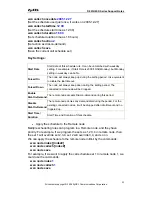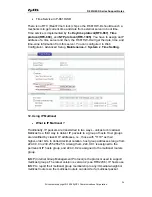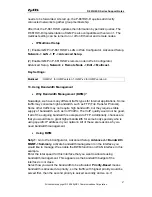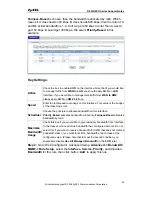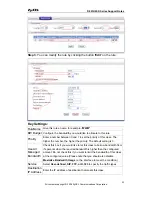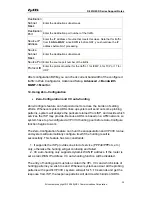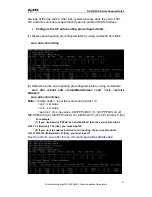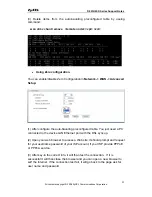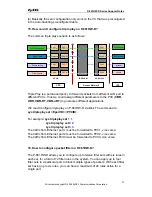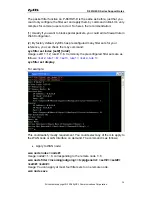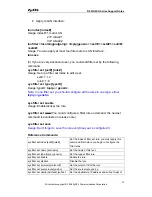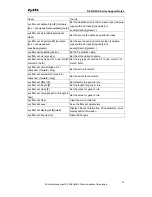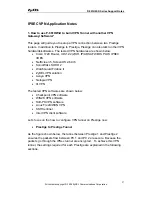
P-661HW-D Series Support Notes
The actions that can be taken include routing the packet to a different gateway
(and hence the outgoing interface) and the TOS and precedence fields in the
IP header. IPPR follows the existing packet filtering facility of ZyNOS in style
and in implementation. The policies are divided into sets, where related
policies are grouped together. A use defines the policies before applying them
to an interface or a remote node, in the same fashion as the filters. There are
12 policy sets with 6 policies in each set.
•
Setup the IP Policy Routing
Setp 1: Set the index of IP routing policy set rule by command ‘
ip
policyrouting set index [set#] [rule#]
’. Suppose set#=1, rule#=1 in this
example.
Step 2: Suppose we’d like to edit the rule like this:
Policy Set Name=
Test
Active=
Yes
Criteria:
IP Protocol =
6
Type of Service=
Don't Care
Packet length=
0
Precedence =
Don't Care
Len Comp= N/A
Source:
addr start=
192.168.1.2
end=
192.168.1.20
port start=
0
end= N/A
Destination:
addr start=
0.0.0.0
end= N/A
port start=
80
end=
80
Action=
Matched
Gateway addr =
192.168.1.254
Log=
No
Type of Service= No Change
Precedence = No Change
This policy example forces the Web packets originated from the clients with IP
addresses from 192.168.1.2 to 192.168.1.20 be routed to the remote LAN via
the gateway 192.168.1.254.
To implement this, we need to invoke the following command one by one:
ip policyrouting set name
Test
(Set the name as Test of IP routing policy rule )
ip policyrouting set active
yes
(Enable the rule)
ip policyrouting set criteria protocol
6
82
All contents copyright © 2006 ZyXEL Communications Corporation.


















